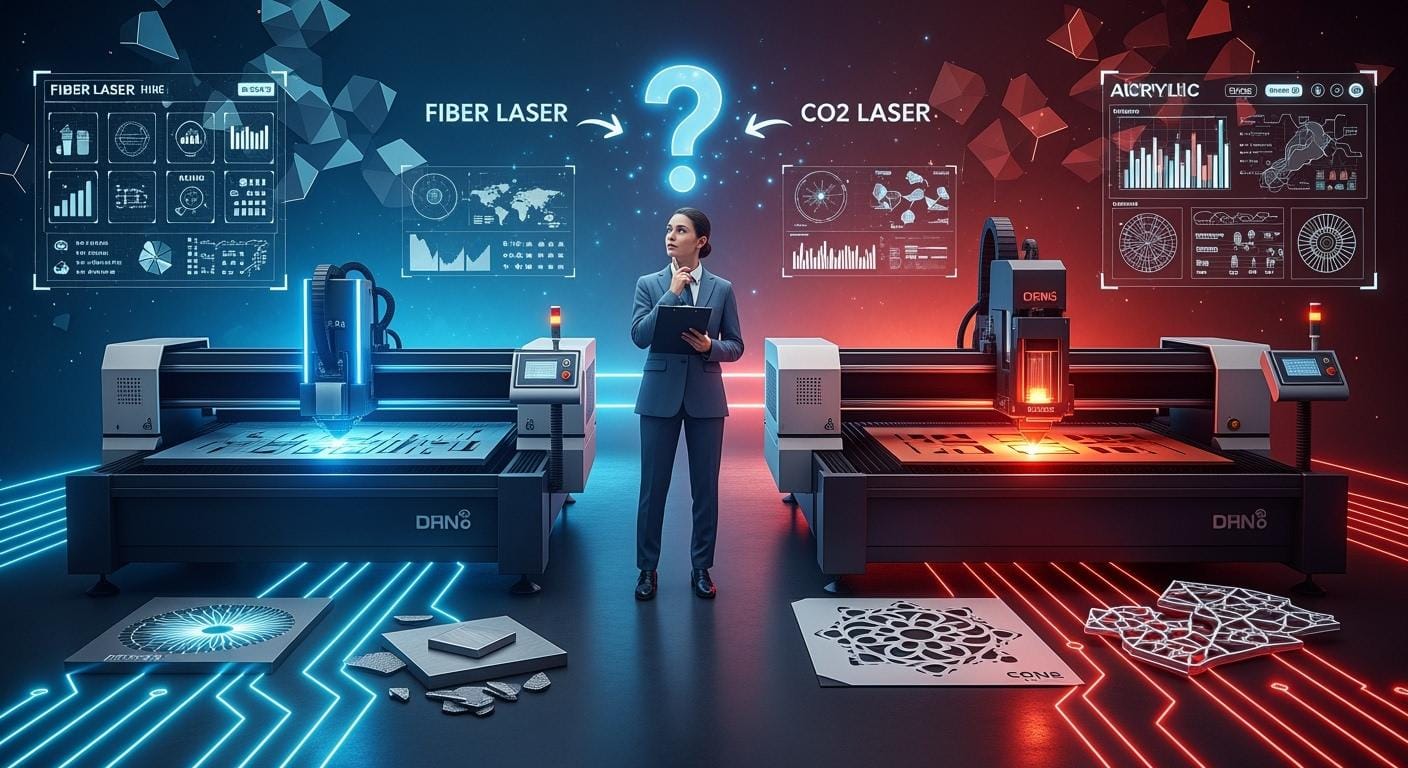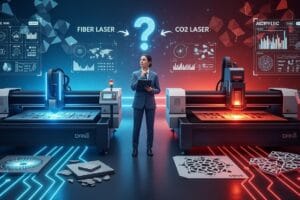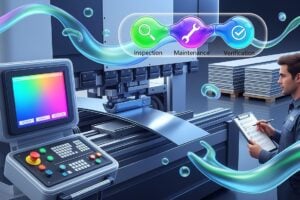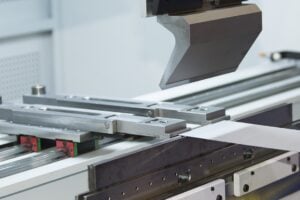For most businesses, you will find that a fiber laser cutting machine gives you a better return on investment. Fiber lasers cut faster, use less energy, and cost less to run each day. If you work with thick non-metals, a CO2 laser cutter might suit you better. The table below shows how much each type costs to run:
| Machine Type | Power Consumption (kWh) | Daily Operating Cost ($) | Monthly Operating Cost ($) |
|---|---|---|---|
| Fiber Laser | 6–10 | 5 to 8 | 100 to 160 |
| CO2 Laser | 15–30 | 10 to 20 | 200 to 400 |
You want an industrial laser cutting machine that works fast, stays reliable, and helps you save money every month.
Table of Contents
Key Takeaways
- Fiber laser cutting machines help you make more money. They cut faster and cost less to run.
- CO2 lasers work best for thick non-metals like wood and acrylic. This makes them good for certain jobs.
- Pick a fiber laser if you mostly cut metals. They are very accurate and work quickly.
- Think about how much energy the machine uses. Fiber lasers use less power, so your bills are lower.
- Fiber lasers are easier to take care of. They break down less and last longer than CO2 lasers.
- Look at what your business needs. The best machine should fit the materials you cut most.
- Buying a fiber laser can help you earn money back faster. It can also help your business make more money over time.
- Always keep safety first. Follow the rules and make sure your team is trained when using laser cutting machines.
Industrial Laser Cutting Machine Comparison
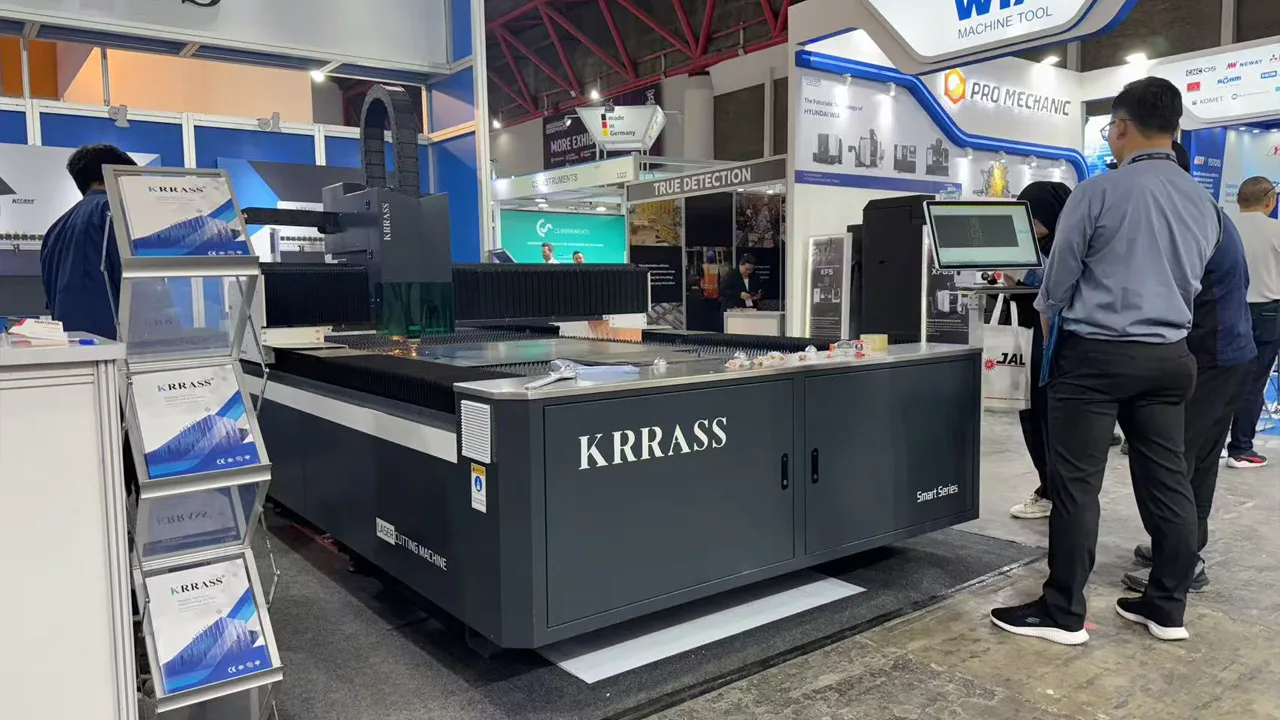
Fiber Laser vs CO2 Laser Overview
When you look at an industrial laser cutting machine, you want to see how fiber laser and CO2 laser models are different. Each machine works in its own way and is good at certain jobs. Fiber laser cutting uses fiber laser technology to make a strong, focused beam. This beam can cut metals quickly and very accurately. CO2 lasers use a gas mix to make their laser beam. These lasers work well for non-metal things and thick plastics or wood.
Fiber laser cutting machines cut metals faster than CO2 lasers. They also use less energy and do not need as much fixing. CO2 lasers cost less at first and can cut more types of non-metals. If you mostly cut metals, fiber laser technology will give you better results. If you need to cut thick non-metals, CO2 lasers might be a better choice.
Key Differences Table
You can check the main differences between fiber laser and CO2 laser cutting machines in the table below. This table lets you compare important features side by side:
| Feature | Fiber Laser Cutting Machine | CO2 Laser Cutting Machine |
|---|---|---|
| Initial Cost | Higher than CO2 | Lower initial equipment cost |
| Application Area | Ideal for high-precision metal cutting | Excels in cutting non-metal materials |
| Cutting Speed | Generally higher, especially for metals | Slightly slower for metal cutting |
| Photoelectric Conversion Rate | 30% (more efficient) | 10% (less efficient) |
| Energy Efficiency | More energy-efficient, faster cutting speeds | Less energy-efficient |
| Maintenance Requirements | Requires less maintenance, longer lifespan | Needs more frequent maintenance |
| Wavelength | 1 μm to 2 μm | 10.6 μm |
| Beam Focus | Smaller spot size (10 times smaller) | Larger spot size |
| Power Density | Higher due to smaller wavelength | Lower |
| Service Life | Long | Average |
| Material Compatibility | Best for metals, some non-metals | Versatile for non-metals, effective for thicker metals |
Tip: If you want to cut thin metals with high precision, fiber laser cutting machines are the best choice. For thick plastics, wood, or acrylic, CO2 lasers work better.
Best Choice for Most Businesses
You want your industrial laser cutting machine to help you work faster and save money. Most businesses pick fiber laser cutting because it has many big benefits:
- Fiber laser machines cut metals faster and more accurately.
- You spend less on energy and fixing with fiber laser technology.
- Fiber laser machines last longer and break down less.
- You can cut many kinds of metals, even shiny ones like aluminum and brass.
KRRASS fiber laser cutting machines use advanced fiber laser technology for high speed, accuracy, and efficiency. These machines help you save money over time and keep your work going smoothly. If your business makes metal parts, car parts, or electronics, fiber laser cutting will help you stay ahead.
CO2 lasers are still useful for businesses that need to cut thick non-metals or many different materials. If you work with wood, acrylic, or plastics, a CO2 laser cutting machine might be better for you.
You should always pick a machine that matches your main materials and business needs. For most industrial jobs, fiber laser cutting machines give you the best value and performance.
Cost and Value
Fiber Laser Cost Factors
When you look at fiber cutting machines, you should think about different costs. These machines use new technology, so they cost more at first. But you save money later because they work better. Here are the main things to think about:
- Electricity usage: Fiber machines need a lot of power, but they use it well.
- Regular maintenance: You have to clean and change parts to keep it working.
- Gases: Some jobs need special gases, which can cost more if you use the machine a lot.
- Operator training: Your team needs to learn how to use the machine safely.
- Software licensing: Some machines need updates or paid software.
- Downtime: If you do not take care of your machine, it might stop working and slow your work.
- Environmental controls: You may need air systems to keep the machine cool.
KRRASS fiber laser cutting machines help you spend less because they use less power and need less fixing. You get a machine that works well and keeps your business going.
CO2 Laser Cost Factors
CO2 cutting machines have their own costs. You might pay less at first, but you should think about what you will pay later. Here are the main things that change the cost of a CO2 machine:
- Age and usage: Old or often-used machines may break more.
- Brand reputation: Famous brands cost more but may help you more.
- Technical specifications: More power and special features can make it cost more.
- Condition: Used machines cost less but may need more fixing.
- Accessories and add-ons: Extra parts or features can make it cost more.
CO2 machines also use more power and need more cooling. This makes them cost more to run over time. The table below shows how well each type uses energy:
| Laser Type | Efficiency (%) |
|---|---|
| CO2 Laser | 5-10 |
| Fiber Laser | 25-30 |
Maintenance and Lifespan
You want a machine that lasts long and does not break a lot. Fiber machines are better because they need less fixing and last longer. You spend less time and money fixing them. CO2 machines need more cleaning and new parts. This can make them stop working more and cost more.
The table below shows how long each type lasts:
| Laser Type | Average Lifespan (hours) |
|---|---|
| Fiber Laser | 100,000 |
| CO2 Laser | 30,000 |
You also need to think about how much work each machine needs:
| Laser Type | Maintenance Requirements | Energy Efficiency | Operating Costs |
|---|---|---|---|
| CO2 Laser | Needs cleaning, new parts, and regular fixing | 10-15% | Higher |
| Fiber Laser | Almost no fixing, less time stopped | Higher | Lower |
If you want a machine that saves you money over time, fiber cutting machines are a good pick. They help you spend less on fixing and power, so your business can do better.
ROI and Long-Term Value
When you buy a laser cutting machine, you want it to help your business. ROI means how fast your machine pays for itself and starts making money. Fiber laser cutting machines usually give you a faster ROI than CO2 laser machines. You can see the difference in the table below:
| Laser Type | Typical ROI Period | Annual Profit Increase |
|---|---|---|
| Fiber | Within the first year | $150,000 – $200,000 |
| CO2 | Longer than one year | $100,000 – $120,000 |
Fiber laser machines help you make more money each year. You get your money back faster and can use profits to grow your business. KRRASS Fiber Laser Cutting Machine models work fast and cut very well. This means you finish more jobs and can help more customers.
It is important to think about long-term value when picking a machine. Fiber lasers use less energy, so your power bills are lower. You also spend less on fixing them because they last longer and break less. CO2 lasers cost less at first, but you pay more later for power and repairs. You should think about these costs before you choose.
Here are some key points about long-term costs:
- Fiber lasers use less energy, so you pay less for power.
- CO2 lasers cost less at first but need more money to run.
- Long-term costs are important when you think about value.
You want a machine that works for years and does not cost extra. Fiber laser cutting machines from KRRASS help you save money every month. They work well and make good cuts, so you waste less and make fewer mistakes.
If you want your business to grow, look at the total value, not just the price. Fiber laser machines give you faster ROI, more profit, and lower costs over time. You make a smart choice that helps your business for many years.
Tip: Always think about what you will spend on power, repairs, and lost time. A fiber laser cutting machine helps you save more money and keeps your business strong.
Performance and Productivity
Cutting Speed and Efficiency
You want your laser cutting machine to be fast and save money. Fiber laser machines are much quicker and work very well. When cutting metals, fiber lasers can be up to three times faster than CO2 lasers. This lets you finish more jobs in less time and make more parts. Fiber lasers also use less power, so your bills are lower. This helps your business run better.
- Fiber lasers cut metals much faster than CO2 lasers.
- You use less energy with fiber, so you save money every month.
- Fiber lasers need less maintenance, so you have less downtime.
- You get greater flexibility to handle different jobs quickly.
When the material gets thicker, the speed gap between fiber and CO2 lasers gets smaller. Still, fiber lasers are usually faster for most metal jobs. You can trust fiber machines to work hard and not stop often.
Precision and Edge Quality
Precision is important if you want your parts to be high quality. Fiber lasers give you better precision and tighter cuts, especially for thin metals. You get clean and sharp cuts with good accuracy. The table below shows how fiber and CO2 lasers compare in precision:
| Laser Type | Precision Tolerance | Suitable Applications |
|---|---|---|
| CO2 Laser | Broader tolerances | Versatile materials |
| Fiber Laser | Tighter tolerances | High precision metals |
CO2 lasers can make smoother edges on some metals like stainless steel and mild steel. If you want the best edge on these, you might need extra work with fiber lasers. Still, fiber lasers give great quality for most metal jobs. You waste less material and make fewer mistakes, which helps your business grow.
Automation Features
Modern fiber laser machines, like KRRASS, have more options and smart automation. You can use automatic typesetting to arrange parts and save material. Fiber laser machines can work all day and night without much help. They have systems that load raw materials and take out finished parts by themselves. This means you need less manual work and have less downtime.
- Fiber laser machines use smart software for arranging and controlling jobs.
- You can switch between jobs quickly and easily.
- Automation helps you work faster and keeps things running smoothly.
KRRASS fiber laser cutting machines are known for being accurate, having automatic typesetting, and strong automation. You can count on these machines to give you great results, high quality, and more ways to do your work.
Material Compatibility
Metals—Fiber Laser Strengths
You want a machine that cuts metals fast and well. Fiber technology works best for most metals. You can cut steel, aluminum, copper, brass, and titanium easily. Here are some metals you can cut with good results:
- Steel: You get quick, clean cuts for many jobs.
- Aluminum: The machine cuts this light metal, even though it is shiny.
- Copper: It is hard to cut because it moves heat fast, but fiber machines do it well.
- Brass: The shiny surface does not slow down the cutting.
- Titanium: You can cut strong, light parts for planes or medical tools.
Fiber machines use a wavelength that metals take in well. This helps you cut faster and cleaner. CO2 systems do not work as well on shiny metals like aluminum or copper. You also spend less time fixing fiber machines. KRRASS models work great for all these metals, so you can do more jobs and help your business grow.
Tip: If you cut shiny or reflective metals, fiber machines are the best choice.
Non-Metals—CO2 Laser Advantages
CO2 machines are great for cutting non-metal things. You can use them for bamboo, crystal, horn, paper, plexiglass, marble, cloth, leather, rubber, and plastic. They also work well on wood, acrylic, stone, glass, ceramics, MDF board, plywood, ABS, dual-color board, PP, PE, PET, PVC, fabric, foam, fake leather, special fabric, rubber sheets, silicone, tiles, granite, EVA, felt, cardboard, carbon fiber, and fiberglass.
CO2 lasers use a bigger wavelength that works for natural and man-made materials. You get smooth edges and can cut thick pieces, often more than 6 mm (1/4 inch). Fiber machines do not cut thick natural materials as well. If your business makes signs, crafts, or packages, you will find CO2 machines work better.
| Laser Type | Material Handling | Efficiency | Cutting Thickness |
|---|---|---|---|
| CO2 Laser | Great for thick natural materials | Better for non-metals | Good for over 6.0 mm (1/4″) |
| Fiber Laser | Not good for thick natural stuff | Faster for metals | Not good for thick organics |
Specialty Applications
Sometimes you need a machine for a special job. Fiber machines are best for metal parts, like in medical tools. You can make small, exact pieces for tools or implants. CO2 machines are perfect for cutting and marking non-metal things. Many sign makers use CO2 systems for acrylic, wood, or plastic signs.
| Laser Type | Industry/Application | Description |
|---|---|---|
| Fiber Laser | Medical Devices | Makes small, exact parts for medical tools |
| CO2 Laser | Signage | Cuts and marks non-metal things for signs |
You should pick a machine that matches your main materials and work. Fiber machines help you do better with metal jobs. CO2 machines are great for creative and non-metal projects.
Practical Considerations
Ease of Use and Training
You want a laser cutting machine that is easy to learn. Fiber laser machines have simple software and clear buttons. You can start jobs with just a few taps. Many fiber laser systems, like KRRASS, have touchscreens and step-by-step help. This lets new workers begin faster.
CO2 laser machines are also easy to use, but you might need more lessons if you cut many materials. Your team should always know the safety rules and how to care for the machine. KRRASS gives you training and support to help you get started. If you need help, you can ask their technical team.
Tip: Pick a machine with good training and easy software. This saves time and helps you make fewer mistakes.
Machine Footprint
You need to think about how much room your machine needs. Fiber laser cutting machines are usually smaller. You can put them in tight shops or busy factories. KRRASS has different sizes, so you can find one that fits your space.
CO2 laser machines often need more space. They may have bigger tubes and extra cooling parts. If your space is small, a fiber laser machine will fit better.
Here is a quick comparison:
| Machine Type | Typical Size (L x W x H) | Space Needed | Best For |
|---|---|---|---|
| Fiber Laser | 3m x 2m x 2m | Smaller | Tight workspaces |
| CO2 Laser | 4m x 3m x 2.5m | Larger | Spacious factories |
Note: Always measure your shop before you buy a machine. Make sure you have enough space for the machine and to move around it safely.
Energy Consumption
You want to keep your power bills low. Fiber laser machines use less energy than CO2 lasers. This means you save money every month. Fiber lasers turn more electricity into cutting power.
CO2 lasers use more power because they need extra cooling and are less efficient. Over time, this can make your costs much higher.
Here is a simple table to show the difference:
| Machine Type | Power Use (kWh) | Monthly Cost ($) |
|---|---|---|
| Fiber Laser | 6–10 | 100–160 |
| CO2 Laser | 15–30 | 200–400 |
KRRASS fiber laser cutting machines help you save energy. You can cut more with less power. If you want to spend less, fiber laser technology is a smart pick.
Reminder: Using less energy means more profit for your business and helps the environment.
Safety and Support
You want your laser cutting machine to keep your team safe every day. Safety matters in every workshop. Fiber laser and CO2 laser machines use strong beams that can harm eyes and skin. You must follow safety rules to protect everyone.
Most fiber laser cutting machines, like those from KRRASS, come with safety shields and enclosed designs. These features block stray beams and keep dust away from your workspace. You should always wear safety glasses when you work near the machine. You must keep hands and tools away from the cutting area while the laser runs.
CO2 laser machines also need safety steps. You should check for proper ventilation. These machines can make smoke and fumes when they cut plastics or wood. You need a good exhaust system to keep the air clean. You must keep fire extinguishers close to your machine. You should train your team to handle emergencies.
Tip: Always read the safety manual before you start. Make sure everyone knows how to stop the machine quickly if something goes wrong.
KRRASS supports you with training and safety guides. You get help from their technical team if you have questions. KRRASS offers a warranty on their fiber laser cutting machines. This warranty covers repairs and parts for a set time. You can work with confidence, knowing help is available if you need it.
Here is a quick safety checklist for your workshop:
- Wear safety glasses and gloves.
- Keep the workspace clean and free of clutter.
- Use proper ventilation and exhaust systems.
- Check safety shields and covers before you start.
- Train your team on emergency stops and fire safety.
- Keep a first aid kit and fire extinguisher nearby.
You should choose a machine with strong support and a good warranty. KRRASS gives you access to expert advice and fast service. If you need help, you can contact their support team. You get peace of mind when you know your machine is safe and backed by a trusted company.
Safety and support help your business run smoothly. You protect your team and your investment. You build trust with your customers when you follow safety rules and keep your machines in top shape.
Choosing Your Laser Cutter

Decision Checklist
You want to pick the best machine for your business. Use this checklist to help you choose what fits your needs:
- What do you cut most of the time?
- Do you need to cut metals, non-metals, or both?
- Is saving energy important for your business?
- What is your budget for buying and running the machine?
- Do you need smooth edges right away, or can you finish them later?
- How much space is in your workshop?
- Can your team handle a lot of maintenance?
- Do you need fast cutting for lots of work?
Tip: If you want to cut metals quickly and save energy, a fiber machine is a good pick. If you cut thick plastics or wood, a co2 machine may work better for you.
Here is a table to help you compare the main things:
| Factor | Fiber Machine | CO2 Machine |
|---|---|---|
| Materials | Metals, some non-metals | Non-metals, thick plastics, wood |
| Energy Efficiency | High | Lower |
| Edge Quality | May need extra finishing for smoothest edges | Smoother edges on many materials |
| Initial Cost | Higher | Lower |
| Maintenance | Less often, easier | More often, can be harder |
Industry Recommendations
Different jobs need different machines. Here are some ideas:
- Automotive and Aerospace: You need fast and exact cuts. Fiber machines, like the KRRASS Smart High Configuration Series, are great for car and plane metals.
- Electronics: You want neat, accurate cuts on thin metals. The KRRASS Smart-Plus Tube and Plate model lets you cut sheets and tubes.
- Medical Devices: You need small, perfect parts. Fiber machines help you make these with tight sizes.
- Signage and Crafts: You often cut acrylic, wood, or plastics. A co2 machine gives you smooth edges and works well for these jobs.
- General Manufacturing: If you cut many metals, a fiber machine is fast and saves money.
Note: KRRASS has machines for many kinds of work. You can find one that matches your main materials and what you make.
Future-Proofing
You want your machine to last a long time. Many people now use fiber machines for metal work. These machines cost less to run and work better on metals. More businesses pick fiber machines to stay ahead.
If you want to keep up with new tech and save money, a fiber machine is a smart choice. Co2 machines cost less at first, but fiber machines give you more value over time. You get less fixing and better energy use. This helps your business grow and stay strong.
Remember: Picking the right machine now helps you avoid spending more later. Think about what you will need in the future, not just today.
You now see that fiber laser cutting machines work best for most industrial jobs. CO2 lasers still help with thick non-metals and special projects. Always match your machine to your main materials, budget, and business goals. Use this quick checklist:
- What do you cut most?
- How much do you want to spend?
- Do you need speed or special material handling?
For expert advice, reach out to KRRASS or talk with a trusted manufacturer. Make the right choice for your business today!
FAQ
What materials can you cut with a fiber laser cutting machine?
You can cut metals like steel, aluminum, brass, and copper. Fiber lasers work best for metal sheets and tubes. You can also cut some thin non-metals, but metals give the best results.
When should you choose a co2 laser cutting machine?
You should choose a co2 laser cutting machine if you need to cut thick non-metals like wood, acrylic, or plastic. This machine works well for signs, crafts, and packaging materials.
How much space do you need for a fiber laser cutter?
Most fiber laser cutters fit in small workshops. You need about 3 meters by 2 meters of floor space. Always check the machine size before you buy.
Is it hard to learn how to use a laser cutting machine?
You can learn to use a laser cutting machine quickly. Most machines have easy software and clear controls. Many brands offer training and support to help you get started.
How often do you need to maintain a fiber laser cutter?
You need to clean the machine and check parts regularly. Fiber laser cutters need less maintenance than other types. You should follow the manufacturer’s guide for the best results.
Can you cut reflective metals with a fiber laser?
Yes, you can cut reflective metals like aluminum and brass with a fiber laser. The machine uses a special wavelength that works well with shiny surfaces.
What safety steps should you follow when using a laser cutter?
You should always wear safety glasses. Keep your hands away from the cutting area. Make sure you have good ventilation. Read the safety manual before you start.
Tip: Always keep a fire extinguisher and first aid kit near your machine.
